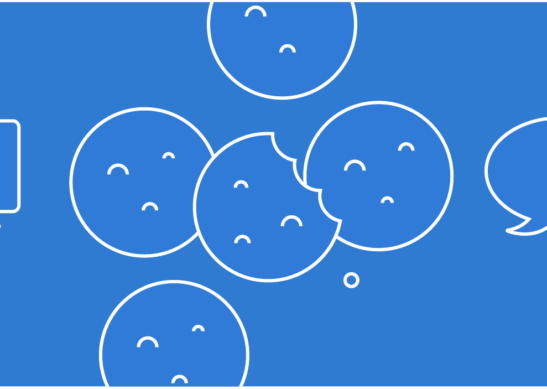
The Agency View: Brands Will Keep Spending
Sarah Rose, SVP of international digital operations at IPG‘s Kinesso, shares her views about how the third-party cookie changes will affect engagement, Google‘s core goal of protecting user privacy and the growing value of first-party data.
When Google withdraws support for third-party cookies from Chrome in 2023, marketers will lose much of their ability to track consumers as they travel the web, target them with relevant advertising and measure how those ads perform and contribute to sales.
But this doesn‘t mean that brands will no longer be able to engage directly with their customers, says Sarah Rose, SVP of international digital operations at IPG‘s Kinesso. She believes the general shift away from third-party cookies will ultimately help brands get closer to their customers, and agencies want to help facilitate that type of approach.
“There are a lot of unknowns, but the value of the first-party cookie will remain,” she says. “The engagement between brands and their customers will still be strong.”
In the second of a two-part interview, CafeMedia spoke to Rose about how the third-party cookie changes will affect measurement, Google‘s core goal of protecting user privacy and the growing value of first-party data.
Do most brands have ID vendors, or are they testing vendors?
Most of them are working within their own data management platforms (DMPs) and customer data platforms (CDPs). Advertisers are looking to activate their first-party data and communicate directly with their customers. They‘re doing that by integrating their DMPs or CDPs , which house their customer data, with the demand-side platforms they use to activate ad campaigns. This excludes the need for third-party data sources, which have never really performed well anyway.
They‘re working with their own platforms as opposed to using an identity vendor.
Yes. All the ad networks, the third-party attribution providers — that‘s what‘s going to be hit hard within this shift.
What does measurement look like without those and without third-party cookies?
There is a loss of tracking through activation with this. So far, we‘ve seen a 70 percent to 80 percent loss in addressable audiences thus far, specifically within Apple iOS environments. It‘s a very real thing.
Does that impact the spend, if the same media is available without the data and tracking for measurement?
Total spend is not being affected but is more notably ‘directed‘ toward known first-party audience data. Alternatively, for e-commerce sites and big CPG companies, performance is becoming inferred, where they are using things like marketing mix modeling and known data to infer for the unknown.
Interesting solutions to get around this would be site tracking such as Google Analytics tagging, which can show drivers toward brand-direct websites. This would also include tag management systems that provide advertiser-specific tracking on websites.
Those types of solutions are helping advertisers and brands track engagement within their products. But with third-party tracking being deprecated, there‘s just a loss of those types of viable advertiser solutions within the market. What‘s really going to work from a tracking perspective? We see Google site ID solutions being really robust, Google Ads being really robust. But third-party tracking solutions are just not going to be forward-thinking in the industry anymore.
That has been the case with Safari for some time. Is Chrome a little more insulated, or does it just mean Google has an advantage and people will work with Google because they have first-party data?
Yes. We‘re going to see more of that, where it‘s the deeper-walled gardens and the competitive landscape really being these big behemoths such as the Apples, Googles and Amazons of the world with their huge aggregations of user data. Brands will be moving toward solutions that provide a full, robust tracking environment, and that‘s a truism.
I think Google is trying to figure it out. Obviously, it makes most of its revenue [from advertising], so it‘s a benefit to Google to support the industry in a way to keep advertising viable while they also, in turn, build a little bit of their own monopoly, which is what they‘re trying to do with FLoC, as is Apple and as is Amazon. This is not new.
Kinesso‘s solutions, as part of our core strategy, aim to protect user privacy, and I think the industry as a whole can do this while also engaging brands and building trust in the technology.
That said, if you can‘t track it and you can‘t measure it, what‘s the value of advertiser spend? I don‘t think the big gorillas in the industry want to get into that type of dichotomous conversation with brands that are wanting to spend, but at the same time, there is a subtext of ‘just work within Google platforms, and we‘ll give you a complete solution.‘
It‘s an open landscape right now. There are a lot of unknowns, but the value of the first-party cookie will remain. The engagement between brands and their customers will still be strong. That‘s the future: protecting user privacy and user data while still being able to track performance across the ecosystem.
Google announced a few months ago that it wouldn‘t build tracking alternatives to third-party cookies, though advertisers can come with their own PII for upload. Is this a big upheaval for brands or agencies?
It is a big change. I want to be clear about it. It’s a different way to measure rather than a different way to engage.
The measurement solutions within the FLoC [Privacy] Sandbox environment will be a different way to measure performance as an aggregate to a user base. Following one user across multiple paths and knowing who exactly that user is — that’s what they’re removing from the measurement solutions. And Google has been doing this for quite some time with its moves to restrict their direct transfer and log files.
Brands will continue to spend in the same way, but the way that we measure against that will be different.
What advice would you give to your fellow advertisers to take advantage of the increased runway from Google’s decision to delay the deprecation of third-party cookies until 2023?
Although Google has pushed back the deprecation of third-party cookies, its strategy remains the same: to offer consumers privacy and control of their personal information on the open web and limit PII leakage. Brands should continue to develop first-party data and activation strategies across their mar-tech and ad-tech stacks.
This also creates opportunities for technology vendors to develop deeper connections with CDPs and DMPs and provide solutions to help brands track consumer engagement on their sites.
This interview has been edited for length and clarity.


